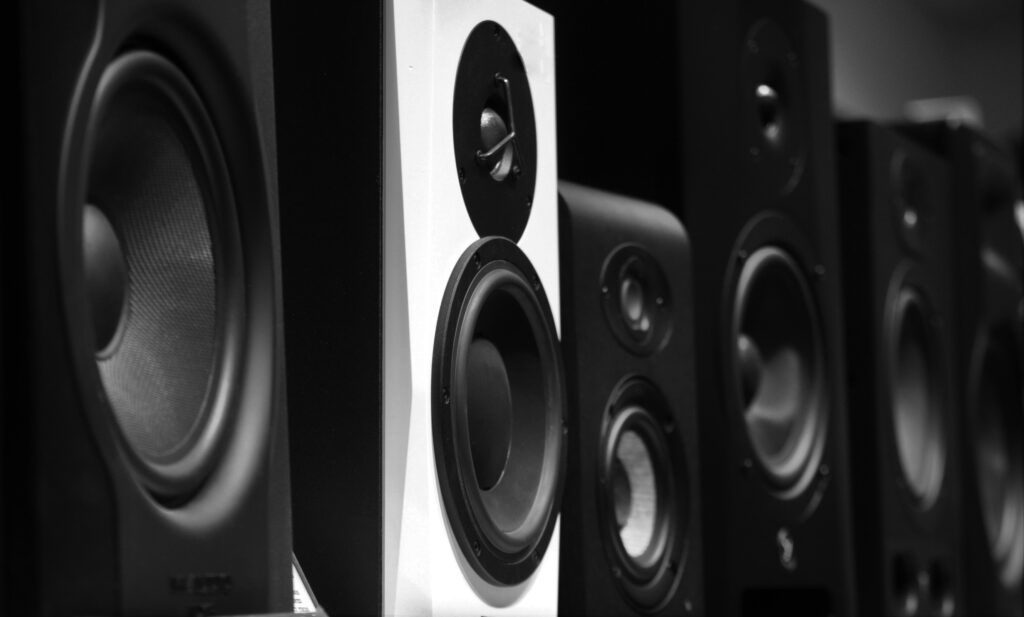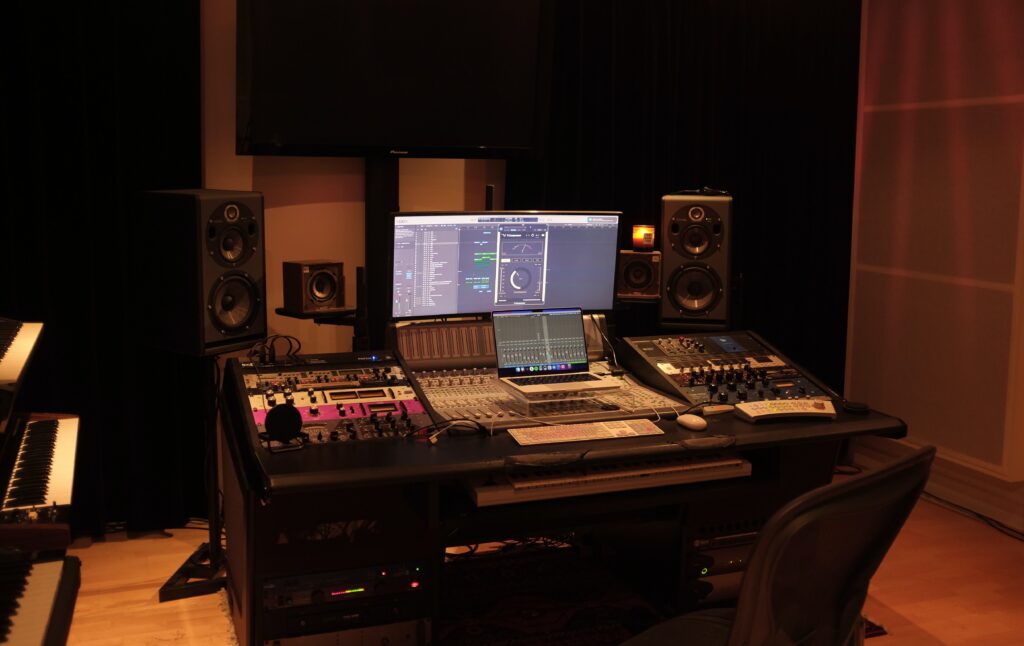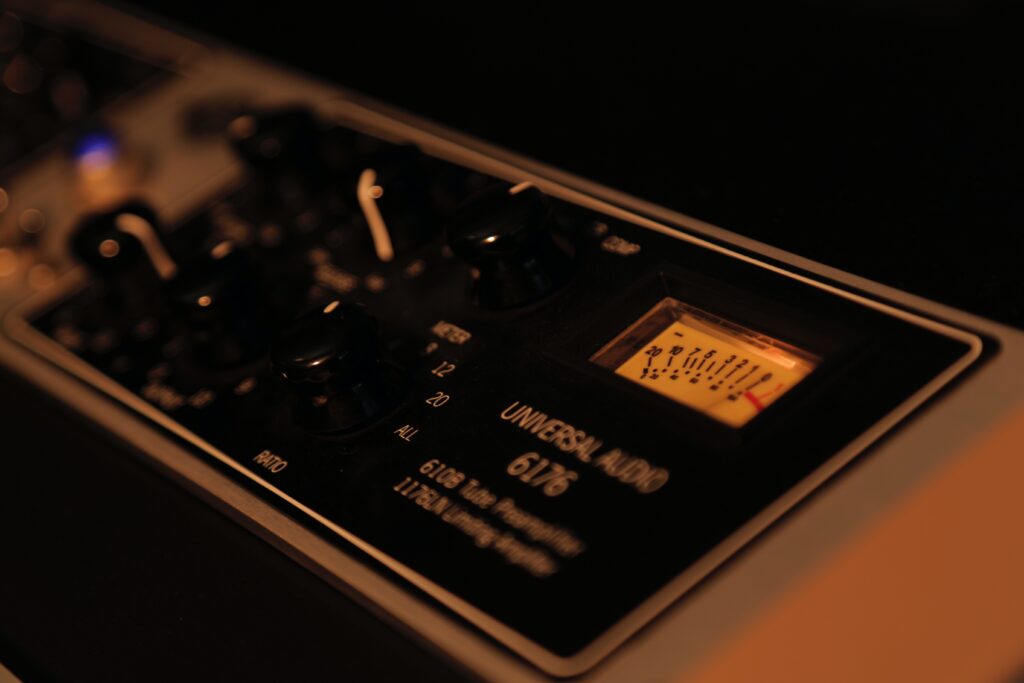From artificial intelligence to augmented reality, every industry is undergoing a technological revolution, and the domain of sound engineering is no exception. Among the multifarious tools sound engineers utilize in their work, premium studio monitors stand paramount. The difference between music created in a top-notch studio versus music produced with ordinary equipment is staggering, and studio monitors play a pivotal role in this disparity. Today, high-end studio monitors not only offer superior sound reproduction but are also becoming increasingly innovative and sophisticated — catering to the varied needs of professionals in the audio industry. This exploration encompasses the understanding of studio monitors, their technical evolution, the process of choosing an appropriate one, an examination of some leading brands, and a review of user experiences.
Contents
Understanding Studio Monitors
High-End Studio Monitors: Defining their Purpose and Functionality
Audio technology has taken massive strides in the last decade, revolutionizing the way we perceive and process sound. One such innovation is high-end studio monitors, a must-have asset for any serious audiophile or professional sound engineer. But what exactly is their purpose and functionality? Let’s dive in without any further ado.
Purpose of High-End Studio Monitors
At the heart of any professional or home studio, high-end studio monitors play an instrumental role. They are designed specifically to give a transparent, accurate, and neutral representation of the audio being played. Unlike standard consumer speakers that are often built to enhance certain frequencies thrilling to the ordinary listener, studio monitors provide an honest representation of the sound.
For sound engineers, music producers, and even enthusiastic audiophiles, these high-end monitors are critical. The honest output allows them to hear the slightest nuances in the audio, crucial for mixing, mastering, and producing music. From the bass thickness, mid-range density, to the clarity of treble, every aspect of the sound becomes distinct, allowing for microscopic level adjustment and balance.
Functionality of High-End Studio Monitors
High-end studio monitors are equipped with cutting-edge technology, delivering superior sound accuracy and high-fidelity. A typical high-end studio monitor comes equipped with a number of advanced components such as strong cabinets, precise crossovers, and specific drivers like woofers and tweeters designed for low and high-frequency reproduction, respectively.
Active studio monitors, a popular choice, integrate built-in amplifiers, essentially making them self-powered. This provides the listener with more consistent sound reproduction and eliminates the need for an external amplifier. Another crucial aspect is the monitor design, which can be divided into two main categories: near-field and far-field. Near-field monitors are designed to be placed close to the listener, minimizing the impact of the room’s acoustics, while far-field monitors are placed further away, integrating the room’s acoustic characteristics into the sound.
Many high-end options also offer room correction technology. This feature enables the monitors to analyze the acoustics of the room and automatically compensate for its impact on the audio output. It is specifically useful in rooms not acoustically engineered for sound production, allowing users to hear the true sound as clearly as possible despite their environment.
In the fast-evolving world of tech, it’s essential to invest wisely in equipment that delivers the most accurate results to you. In the context of sound production, high-end studio monitors absolutely fall into that category. From seasoned audio professionals to tech-loving audiophiles, the impact of these advanced devices on creating a refined audio experience is undeniable. Ready to revolutionize your audio experience? Premium studio monitors offer control, precision, and aural delight at your fingertips.

Technical Aspects and Innovations
In the realm of high-end studio monitors, the qualities that differentiate them from the norm extend beyond their basic functionalities and venture into the realm of innovative tech and meticulous design.
A significant mark of a high-end studio monitor lies in its build quality. Manufactured from premium materials, it is designed to minimize unwanted vibrations and colorations, which can taint the purity of the sound. Vibrations are a critical factor to consider as they can cause distortions, making the audio reproduction less accurate. This is why enthusiasts will find features such as thick, non-resonant cabinet walls and advanced bracing in these studio monitors.
Moreover, the performance of high-end studio monitors is largely contingent upon the quality of the drivers used. Superlative monitors often boast advanced driver technology, with materials carefully chosen for their acoustic properties. Whether it’s ceramic, beryllium, or advanced polymers, these materials help in delivering a sound that’s clean, precise, and exceptionally detailed.
Bi-amplification is another significant advancement commonly found in high-end studio monitors. This technology involves dedicating an amplifier to each driver in the monitor, in turn, providing greater control over the audio output. The result is improved acoustical responses and low distortion levels, leading to a cleaner, more accurate sound representation.
Delving further, the inclusion of advanced Digital Signal Processing (DSP) technology is increasingly common in top-tier studio monitors. DSP allows for more precise control over the monitor’s output, enabling creators to shape and tune audio outputs to their preference or to the acoustic conditions of a room. It’s like having a skilled sound engineer inside your speaker, fine-tuning music in real-time.
High-resolution Audio-over-IP (AoIP) is a significant leap in the world of studio monitors. This technology allows devices to exchange high-quality audio streams over Ethernet networks. For music producers who have to manage multiple audio devices, AoIP makes it a seamless and flexible process.
Wi-Fi and Bluetooth connectivity have also become commonplace in recently released high-end studio monitors. Connectivity enables seamless integration into smart homes, wireless control from mobile devices, and easy setup for multiple monitors—a feature that audiophiles appreciate for its convenience.
Unquestionably, every exploration and adoption into advancements in technology play a pivotal role in shaping the high-end studio monitor market. This evolution into higher quality materials, advanced driver technology, bi-amplification, DSP, AoIP, and wireless connectivity all serve a single goal: to deliver the most accurate and superior sound possible.
The enthusiasm for technology, precision, and desire for the ultimate audio experience, drive the relentless innovation happening in the realm of premium studio monitors. As these technologies continue to evolve, so does the potential for experiencing sound in its purest form.

Choosing the Right Studio Monitors
Part Three: Deciphering Specs and Streamlining the Final Decision
Diving even deeper, making an informed decision on studio monitors requires a clear understanding of specifications and what they mean for audio production. Frequency response, power rating, and Total Harmonic Distortion (THD) become crucial factors that can dramatically alter the sound reproduction.
Frequency response is a representation of the range of frequencies a monitor can reproduce. It’s crucial to note that wider doesn’t always translate to better. Consider the actual sound needs. For instance, a response of 50Hz might be enough if not particularly working with deep bass sound, thereby saving on investment costs.
Power rating, measured in watts, determines how loud the monitor can go before distorting the sound. Higher numbers are essential for bigger rooms, or for audiophiles craving high-quality music at louder volumes. However, there’s a flip side. Listener fatigue can creep when regularly cranking up the volume, detrimental for long-term listening or editing sessions.
Regarding distortion, the Total Harmonic Distortion (THD) is a key figure on the spec sheet to pay attention to. It tells the purity of audio the monitors can deliver – the lower the THD, the cleaner the sound reproduction, and the more accurate the audio analysis will be.
Beyond the numbers, visualizing the end goal truly marks the cutting-edge tech enthusiast. What’s the main task – mixing, mastering, or just enjoying immersive, high-quality sound? Different activities require different sound reproduction characteristics. For instance, mixing and mastering tasks need accuracy above all. Investing in monitors that exemplify transparency — even if they don’t always make the music sound enjoyable — will be the ideal choice for such tasks.
Finally, consider the environment factors. Are the monitors going in a small studio, a large room, or a cozy corner of a bedroom? Room characteristics, including size, shape, and materials used in it, influence the quality of sound reproduction. In smaller rooms, near-field monitors would be enough, while larger rooms might require far-field monitors or addition of a subwoofer for the audio to reach all areas. High-end monitors with adjustable settings will also allow tweaking the sound profile to suit different room conditions.
Making an informed decision when investing in high-end studio monitors isn’t binary; it’s an intricate process that requires striking the right balance between tech specs, personal needs, and budget. Ultimately, the best studio monitor is one that meets these criteria while ensuring a fulfilling, elevated audio experience. Commit to continuous learning and adapting to the ever-evolving audio technology landscape. Stay in the wave, and ride it right to a shining audio future.

Top Brands and Models
Pitting Giants: Top Brands of High-End Studio Monitors
Delving into the elite realm of premium studio monitors, three brands reign supreme – Genelec, Yamaha, and ADAM Audio. Known for their high-end hardware and sound reproduction technologies, these companies set the standard for precision audio monitoring.
Starting with Finnish audio pioneer, Genelec. The brand’s technologically-rich portfolio is marked by its flagship model, the 1236A Smart Active Monitor (SAM™). Equipped with a staggering 2 x 750W + 250W + 250W power output and a robust 15″ woofer, the 1236A offers a frequency response of 29 Hz to 21 kHz with utmost accuracy. Notable features include the Directivity Control Waveguide (DCW) and Adaptive Woofer Control (AWC) technologies, ensuring precision sound localization and reduced distortion. The Digital Loudspeaker Management system (GLM), embedded in every SAM model, customizes the monitoring system to your unique acoustic environment.
Meanwhile, Japanese audio stalwart, Yamaha‘s flagship model, the NS-5000, takes a divergent approach. Crafted with a three-way acoustic suspension speaker system and a zelkova wood cabinet, this model is as visually appealing as it is acoustically powerful. Packed with a bevy of patented technologies like a 3 cm dome Tweeter, 8 cm midrange cone, and a 30 cm woofer, the NS-5000 boasts a rich, detailed, and balanced sound output from 26 Hz up to 40k Hz. Yamaha sets itself apart with its MusicCast feature, empowering users to experience high-resolution aural experiences through wireless networks.
Lastly, Germany’s ADAM Audio has redefined the pro audio scene with its S Series, and particularly, the S5H model. It is the embodiment of the company’s High Dynamic Range (HDR) system – an innovative design fulfilling the most demanding studio environment requirements. With 2 x 700W + 400W + 400W power output, and equipped with a unique Extended Linear Excursion (ELE) bass driver and a DCH mid-range driver, the S5H ensures clear, undistorted sound over an expansive frequency range – 22 Hz to 50 kHz. Its S-ART tweeters, uniquely handmade, provide unmatched precision and response beyond 50 kHz, a class of their own.
While each of these brands showcases unique strengths and approaches to professional audio reproduction, they all share a common commitment to precision and accuracy. Their flagship models, despite their differentiation factors, imbue listeners with an authentic and unparalleled auditory experience. The decision to invest in one over another ultimately boils down to individual preferences and specific studio specifications. A discerning ear, a passion for technology, and a quest for perfection ensure that the journey to pick the perfect studio monitor remains as exciting as the evolving landscape of audio technology itself.

Reviews and User Experiences
User experiences and reviews of premier studio monitors provide valuable insights into the impact these devices have on audio work. In the tech-enthusiastic community, several monitors have stood out for their immaculate sound reproduction, resulting in glowing reviews from those who seek nothing but the premium audio output.
Genelec
Genelec, known for its superb technology integration like the Directivity Control Waveguide (DCW) and Adaptive Woofer Control (AWC), continues to outshine in the user reviews. For instance, the 1236A Smart Active Monitor stands out for its sound clarity and room integration. Users emphasize the ease of customization made possible by GLM, Genelec’s Digital Loudspeaker Management System. By refining the sound to suit the room’s acoustics, users note that their mixing decisions become accurate and dependable.
Yamaha
Meanwhile, Yamaha’s studies in resonance and material behavior transpire prominently in their NS-5000 model, earning strong positive reviews within the tech community. Users laud the company’s craftsmanship and design that promotes high-frequency range and precise audio replication. Furthermore, the inclusion of MusicCast connectivity for modern wireless integration is considered a game-changer, offering high-resolution audio streaming that’s both convenient and effective.
ADAM Audio
Audio enthusiasts also rate highly the S Series from ADAM Audio, with particular praise directed towards the S5H model. Users underscore the innovations like High Dynamic Range (HDR) and S-ART tweeters for remarkable performance. The fidelity of its high-frequency reproduction, in particular, receives commendations from sound engineers.
For all these brands, users mention the drive towards precision and precision and the ability to tailor the output based on studio specifications as critical factors in their positive experiences. Furthermore, individual preferences, such as the desire for either analytical or enjoyable sound characteristics, play a major role in user-reviews and consensus rankings.
Conclusion
As technology perpetually evolves, it’s the businesses that successfully marry innovation with quality audio reproduction that receive the highest praises from users. A tech enthusiast’s dream, high-end studio monitors provide not only awe-inspiring accuracy but also the constant novelty of new features and improved experiences.
Remember, though, that user reviews are subjective, influenced by personal preferences and varying expectations. Still, the overwhelmingly positive experiences shared by users indicate a degree of consensus. These high-end studio monitors are, without a doubt, producing the level of performance expected from their steep price tags. As a result, they remain desirable tools for tech enthusiasts, audio engineers, and producers alike, awaiting their next audio discovery or breakthrough.

As technology continues to refine and expand, so too does the sphere of professional audio equipment. The narrative of today’s high-end studio monitors is an ode to this constant evolution. Their dynamic capabilities, advanced features, and unwavering commitment to bringing every sonic detail to life is a testament to their importance in the field of audio production. Whether a music enthusiast, an aspiring artist, or a professional industry veteran, owning these studio monitors allows one to step into an immersive soundscape, where every note is powerful, clear, and accurate. Sophisticated studio monitors are not a luxury, but a professional necessity — a tool that underscores the magic and technical prowess in creating epic sound masterpieces.







